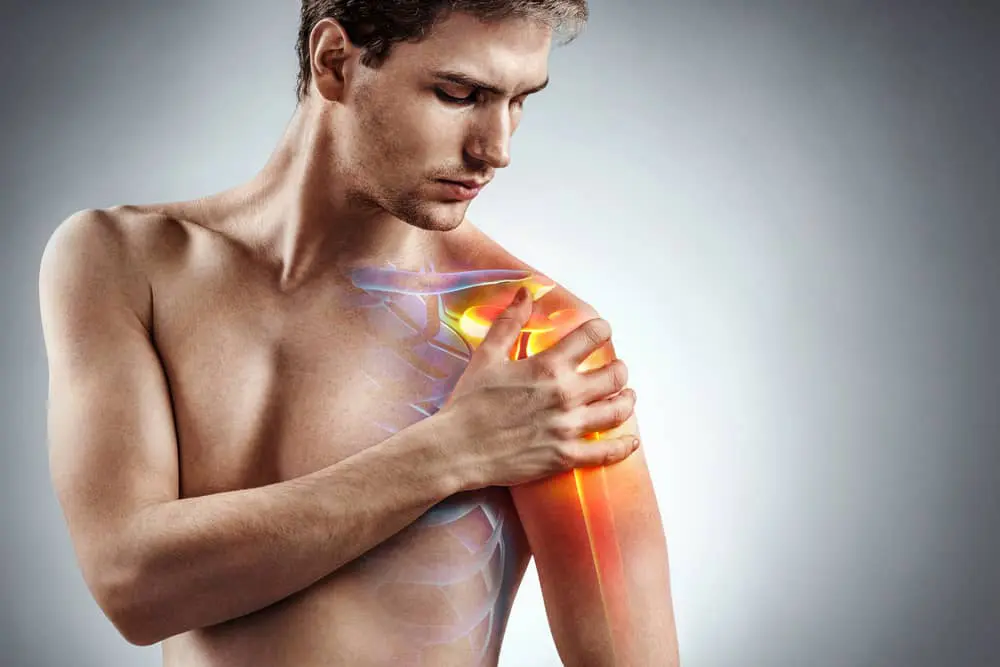Frozen shoulder, AKA adhesive capsulitis, is inflammation of the capsule in the shoulder joint causing pain and stiffness in the shoulder. The shoulder is a ball-and-socket joint with a capsule that surrounds the joint; with frozen shoulder, the capsule becomes inflamed and thickened which results in less synovial fluid (lubrication) and the formation of adhesions in the joint. Pain is present with active and passive range of motion, meaning pain is produced when the patient moves the arm him/herself and when the arm is relaxed and moved for him/her by the doctor. The cause is not fully understood, and seems to have no connection with previous injury, arm dominance, or occupation; however, certain risk factors can increase the chance of developing this condition. The most prevalent risk factor is diabetes; others include stroke, thyroid disease, cardiac disease, lung disease, RA, and other autoimmune conditions.
Frozen shoulder occurs in 3 stages:
- Freezing (Painful) Phase: pain continues to get worse and worse with severe night pain, and as the pain worsens the shoulder losses range of motion. This typically lasts 6 weeks to 9 months.
- Frozen (Stiff) Phase: pain may actually improve, but range of motion is greatly diminished. Daily activities such as tucking in the back of one’s shirt, reaching for a high shelf, combing the hair, or doing up the bra become increasingly difficult, if not impossible to perform. This typically lasts 4-6 months.
- Thawing (Resolving) Phase: pain and range of motion slowly improve. This typically lasts 6 months to 2 years.
Frozen shoulder affects 2-5 percent of the population, and is most common in women between the ages of 40-60. It is referred to as “Fifties Shoulder” in Japan.
If left untreated, frozen shoulder can take up to 30 months to fully resolve. In most cases, treatment with the Niel-Asher Technique (NAT) will speed up recovery by about 10 times. NAT focuses on trigger point therapy to the long head of the biceps and in the muscles that make up the rotator cuff. Along with the trigger point therapy, adjustments to the upper cervical spine and mild physical therapy have been proven to speed up the process of this condition. NAT is a “hands-on” method that utilizes the body’s natural healing mechanisms.


